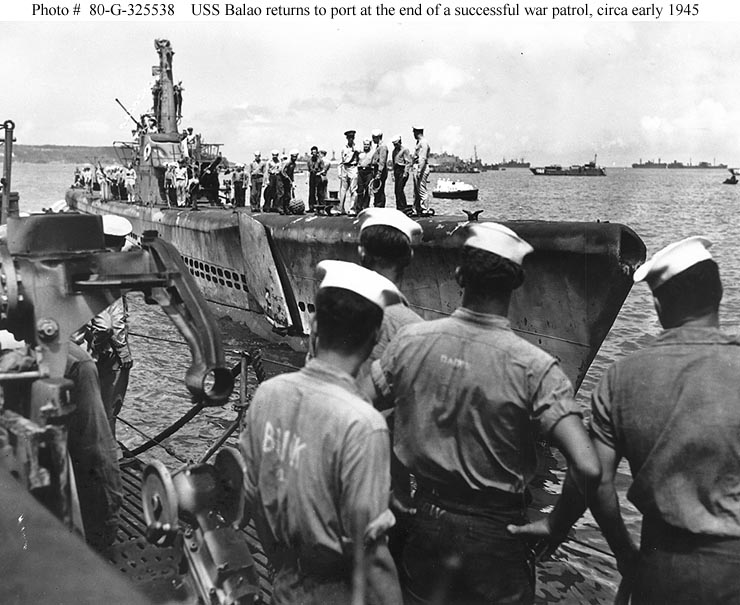The Fleet Boats of World War Two


The pressure hull of a GATO class sub was 11/16 inches of mild steel. The BALAO hull was 7/8 inches of high-tensile steel. The fleet boats launched by the future navy would now dive to a respectable 400 feet. The BALAO boats could also carry 22,000 more gallons of diesel fuel for a total of 116,000 gallons. 119 BALAO class submarines would be constructed of 256 ordered before VJ Day.

Their numbers would provide roughly two thirds of the submarine fleet. Together they would drive the vaunted Japanese Imperial Navy and Merchant Marine from the high seas in an action that has no parallel in history. Submarines of all types formed a mere 1.6 percent of the United States Navy's fleet, yet they sank around 55 percent of all the Japanese shipping credited as lost in World War Two.
On 1 April 1944 the keel for the USS TENCH was laid down at the Portsmouth Navy Yard in Kittery, Maine.. Again, she looked like a GATO class fleet sub, but she was even tougher than the thick-skinned BALAO boats. When she was commissioned on 6 October, she heralded in the final phase of developement of the fleet boats during WW II.
In the beginning years of the Second Battle of the Atlantic, German u-boats showed the greatest promise of victory for the Axis powers, as they had done before in World War One, during the First Battle of the Atlantic.Though they were destined to ultimately lose the technology race in submarine warfare, they had the foresight to build a deeper diving submersible, giving them a distinct defensive advantage. The Unterseeboots of the Kriegsmarine could dive twice the depths of American designs. If the Japanese were half as effective as Americans were at anti-submarine operations, the American fleet boats would have been in serious trouble.
Still, the fleet boats had no equal in terms of operational effectiveness, range, and crew support. By German standards the U.S. Navys submarines were luxury cruisers. With room for 80 crewmen to their 55, American sailors had a more reasonable task load. They also had more elbow-room, had their own bunk, and a crews' mess to take meals in and have recreation.
The German type VII U-boat, their most prevelant design, was only two-thirds the length of an American fleet boat. Each rack (bunk) had 2 to 3 sailors assigned to it, so except for officers and some chiefs, they all hot-bunked. They had no common areas unrelated to work or combat, so they also ate their meals and did any recreational activity in their racks.
American subs went further, carried more torpedos, and generally had more deck armament. They could operate independently and didn't rely on sea-going underwater tankers, like the "Milk-cows" the Germans perilously depended on. The American codes were secure and they had superior radar and signal detection technology. They also had full-time diesel-electric drive, a more efficient and lower-maintence form of diesel-electric power. So what was left for the fleet boats to improve on? They needed to go deeper. Based again on the tried and true GATO class, the USS TENCH took the fleet down to 440 feet.
By wars end, 26 of the 80 TENCH class submarines ordered were completed. They would join the fight against Japanese shipping and make a good account of themselves in the final phase in the Pacific War.
